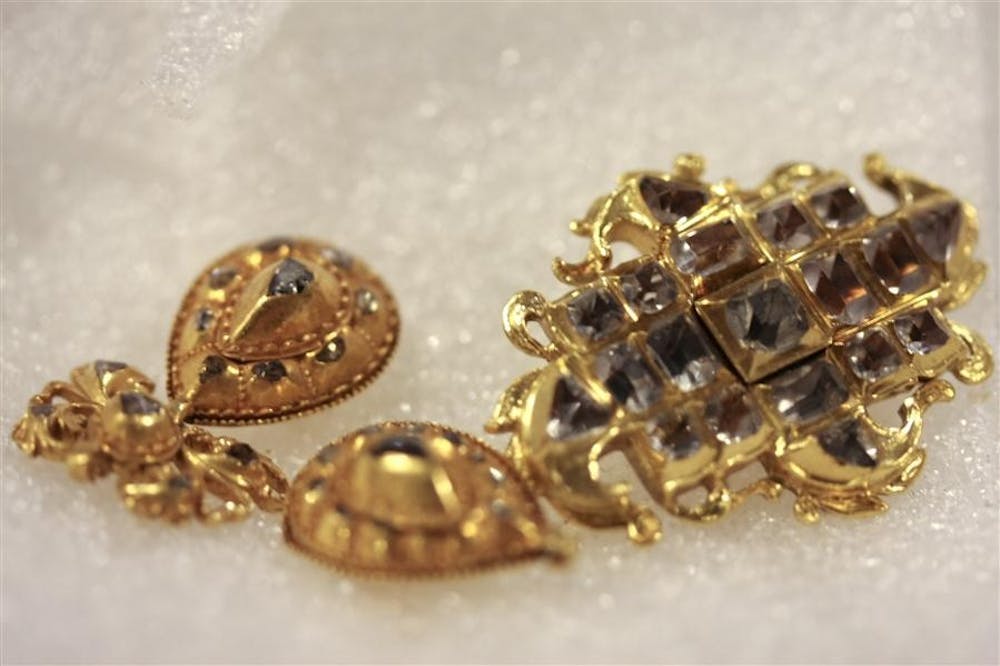As a young child, senior Anna Rogers would watch shows like “Sea Hunt” and “National Geographic.” Now, almost four decades later, Rogers has molded her interest in underwater conservation of artifacts into her major, underwater archaeology.
“I decided to come back to college,” she said. “I started taking scuba classes and took off from there. It is something I always wanted to do.”
Growing up in Melbourne Beach, Fla., Rogers saw shipwrecks by the Sebastian Inlet, and they sparked her interest.
“After a storm, people would take out metal detectors,” she said. “That really made an impression on me, seeing all that go on.”
Through research trips with IU Underwater Archaeology to the Dominican Republic, Rogers is able to study artifacts from shipwrecks.
“I like to study all the coins and artifacts and trace where they came from and trace the shipwreck,” she said. “There are so many that are out there right now that haven’t been discovered.”
Rogers plans to graduate in the fall but said she doesn’t feel finished.
Ideally, Rogers said she wants to eventually find work researching underwater.
“I’d rather research out in the field,” she said. “That would be my goal.”
However, senior Nathan Johnson, also a underwater archaeology major, said he is eyeing a university job.
“I do want to teach at some point, which is not an easy task,” Johnson said. “But long term, I would like a teaching job in a university and to do research in underwater
archaeology.”
Johnson discovered scuba diving after his adviser freshman year told him to pick something random when one of his classes first semester freshman year was full.
“She chose scuba diving for me,” he said. “I really liked it, so the next semester I took a class on using shipwrecks as underwater parks and preserves, and that was just a lecture, no scuba diving or anything fun. It was just cultural resource management, and I really enjoyed it, so I was like maybe I want to continue in this. I just went off from there.”
Academic diving classes, which have lectures in a pool followed by a practice dive later on, are designed to prepare students to go out in the field, Johnson said.
“The class is going to teach you what you are going to need in the field,” he said. “Most of the classes do some underwater photography, they do a little bit of mapping and of recording and things like that.”
Charles Beeker, director of Academic Diving and Underwater Science Programs at the School of Health, Physical Education and Recreation, leads the expeditions to the Dominican Republic.
“We are working on the Captain Kidd shipwreck from 1699, and we will inaugurate that on May 23 of this year,” he said. “We are still doing excavation on the shipwreck, but we are also doing underwater biological assessments of the coral associated with the shipwrecks. We have a series of students that are working on the biology of the wreck site, underwater archaeology of the site and historical significance of the site. We put them all together for students to get a multidisciplinary view of underwater research.”
The Children’s Museum of Indianapolis received a $1 million grant last month to support these expeditions to the Dominican Republic. The funding will help bring artifacts, active archaeology and artifact conservation to the museum visitors, Beeker said.
“It is a five-year grant to continue working on the significant underwater shipwreck site in the Dominican Republic,” he said.
Beeker said he is happy with the partnership between a research university and the largest children’s museum in the world.
“It is definitely a way to support active research and undergraduate education and public outreach with museum visitors in the state of Indiana,” he said.
Beeker, who developed the underwater archaeology program about 10 years ago, said the program specializes in underwater parks and preserves, which establish significant dive sites that protect the resources and provide opportunity for sustainable tourism.
“The goal is to create a system of living museums in the sea,” he said. “We do excavations to identify shipwrecks and to identify ship constructions, components and parts on the site to get a feel for 17th- and 18th-century shipwrecks. Excavations are normally undertaken for a scientific purpose.”
Beeker said he hopes his students will help preserve their dive sites.
“I am interested in the historic shipwrecks, but more importantly, I am interested in protecting these shipwrecks for future generations.”
Students in underwater archaeology major get hands-on experience under the sea

Get stories like this in your inbox
Subscribe





